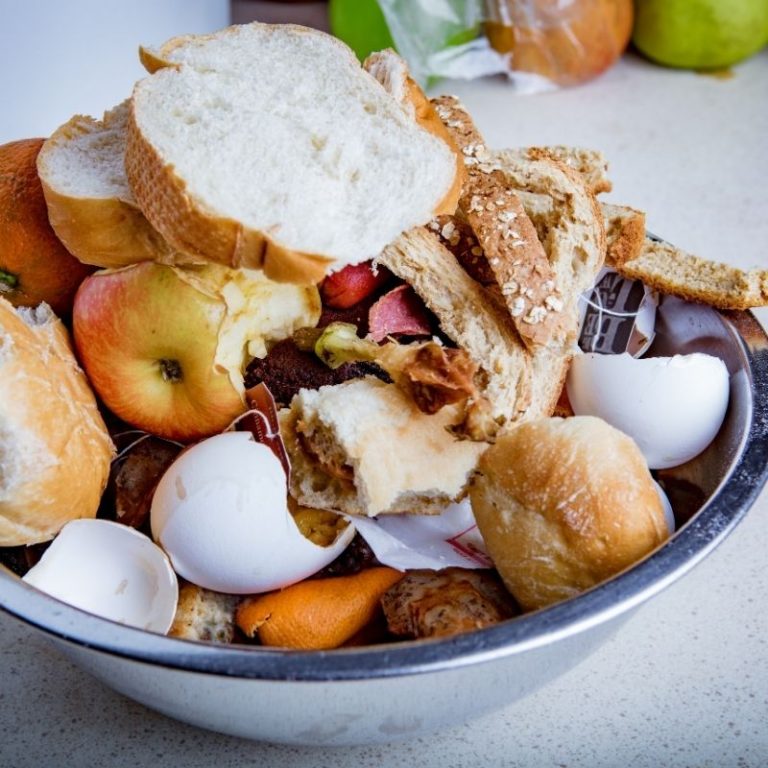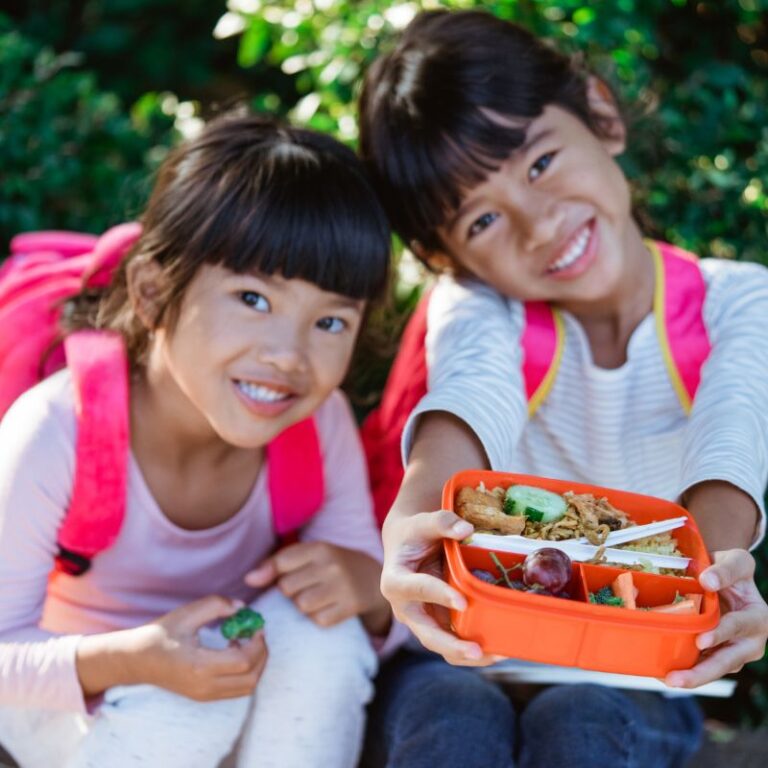Are you ready to decrease food waste?
If you’re anything like me, your monthly fridge clean out includes finding a few oozy and smelly surprises. Remember leftovers from dinner the other week that now has a thick layer of mold growing on them at the back of the fridge? Eww!
Or maybe you have a child who comes home from school with a half eaten lunch that is thrown out. Or, perhaps you are irked with your toddler who always throws food on the ground!
Whatever the case may be, if you’re concerned about household food waste, you’re not alone. Whether you’re more concerned from a budgetary perspective (food waste = money down the drain) or a stewardship/sustainability perspective (wasting food the land has provided), food waste is not ideal. End of story.
Is food waste an issue in Canadian households?
Research from the National Zero Waste Council on household food waste in Canada found that 63% of food waste was avoidable. To put that into context, the typical Canadian household throws away 140 kg or $1,100 worth of food every year.
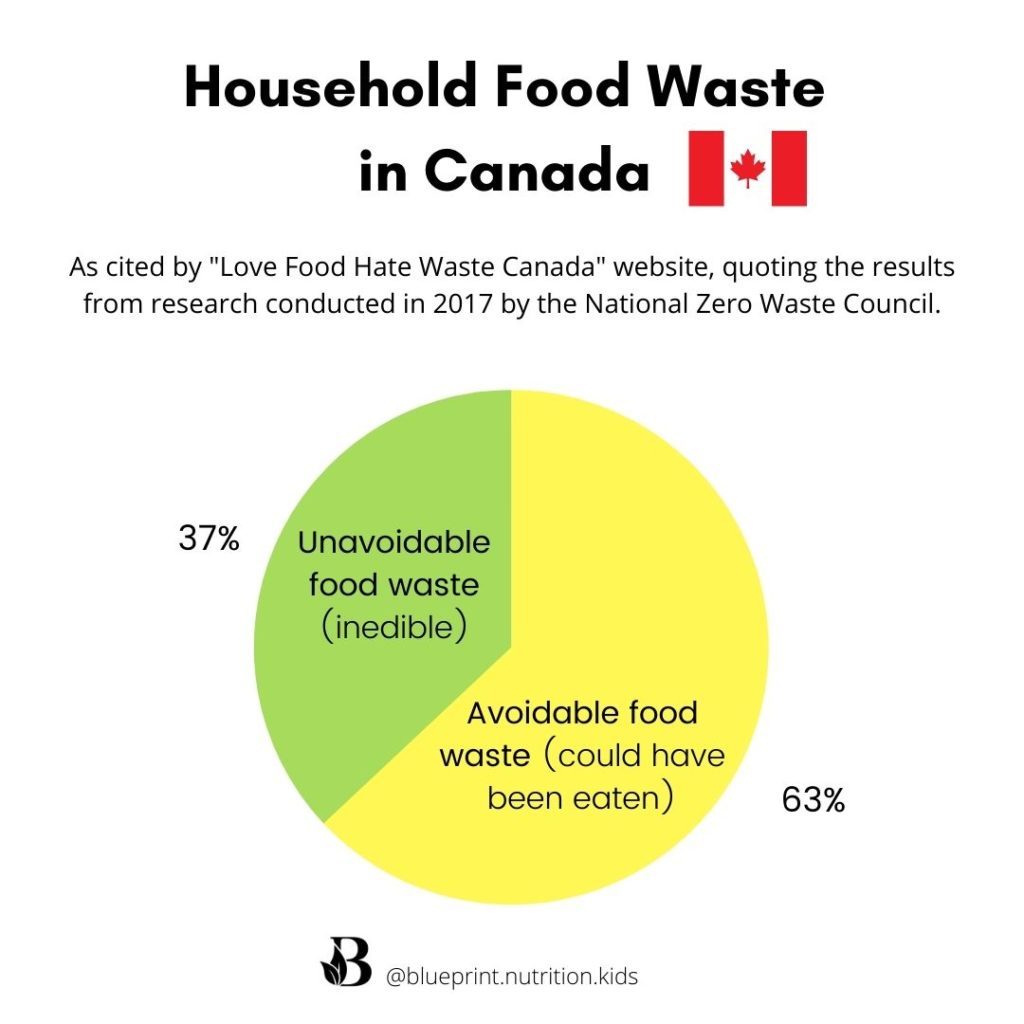
I’d love an extra $1k in my pocket … how about you?
The top 3 foods cited as being wasted most often included: vegetables, followed by fruit and then leftovers.
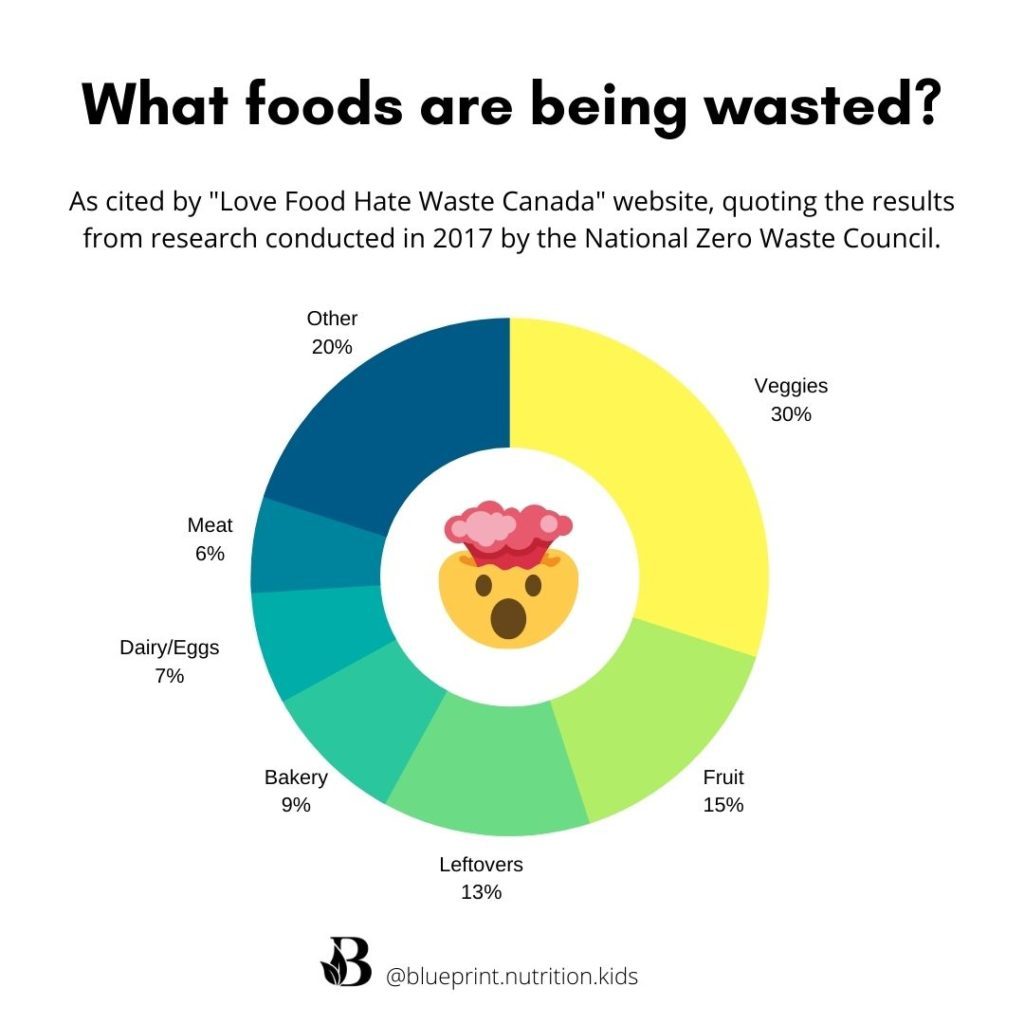
Fortunately, new research conducted in June 2020 during the COVID-19 pandemic revealed that 24% of Canadians were wasting LESS food than usual. This is a step in the right direction, but there is still work to be done.
Food waste and children
There are additional concerns regarding food waste when feeding children.
- You’ve got the baby that throws food
- The picky eater who doesn’t eat anything that you pack for lunch
- The over-enthusiastic teen who takes a pile of food but then leaves half of it there
Is there any way to reduce food waste and stretch your dollar while in the thick of raising kiddies? I’ll start by saying that I certainly don’t have all the answers. However, I do have some suggestions/strategies that I hope you find helpful!
I’ve accumulated my top 7 tips for reducing household waste amidst the child-rearing years and beyond. Let’s dive in.
#1 Weigh the pros and cons of bulk purchasing vs. buying what you need
Amidst the pandemic, many Canadians have been stocking up on large quantities of items at big box retailers to have lots of food on hand “just in case”. While it’s helpful to buy large quantities of food if there is a significant savings (and if you chew through certain food quickly), it’s not always the best approach from a waste reduction perspective for two reasons.
Reason number 1: There is a higher chance of food spoilage. If you buy an economy size container of yogurt and only eat half before it moulds, then was it really a bargain? The ‘savings’ turns into a loss.
Reason number 2: While buying bigger packages of food is not bad, it can lead us to eat more (bigger bag equals more available). Eating more is not a bad thing if you’re hungry. However, eating in excess of what you are hungry for is wasting food IN your body.
#2 Tune into hunger and satiety cues
We often don’t think about food that is wasted inside our bodies – when we eat food but aren’t actually hungry. It’s important to listen to our hunger and fullness cues. It’s equally as important to model and talk to our kids about how they can honour their internal cues too.
Avoiding pressure to eat at the table is important. Start by getting rid of the “clean your plate” or any “bite rules” that involve pressure.
#3 Plate or serve meals with appropriate portions
To decrease food waste at the table, I encourage families to have two serving spoons available. One serving spoon should be larger to serve bigger portions of “preferred foods”. One serving spoon should be smaller to serve teaspoon-sized portions of “learning to like it” foods.
That way if the “learning to like it” foods are not eaten, there is minimal food waste. It’s better to have a child take a bunch of teaspoon-sized helpings vs. a large scoop and leave three quarters of it on his or her plate.
#4 Start meal planning
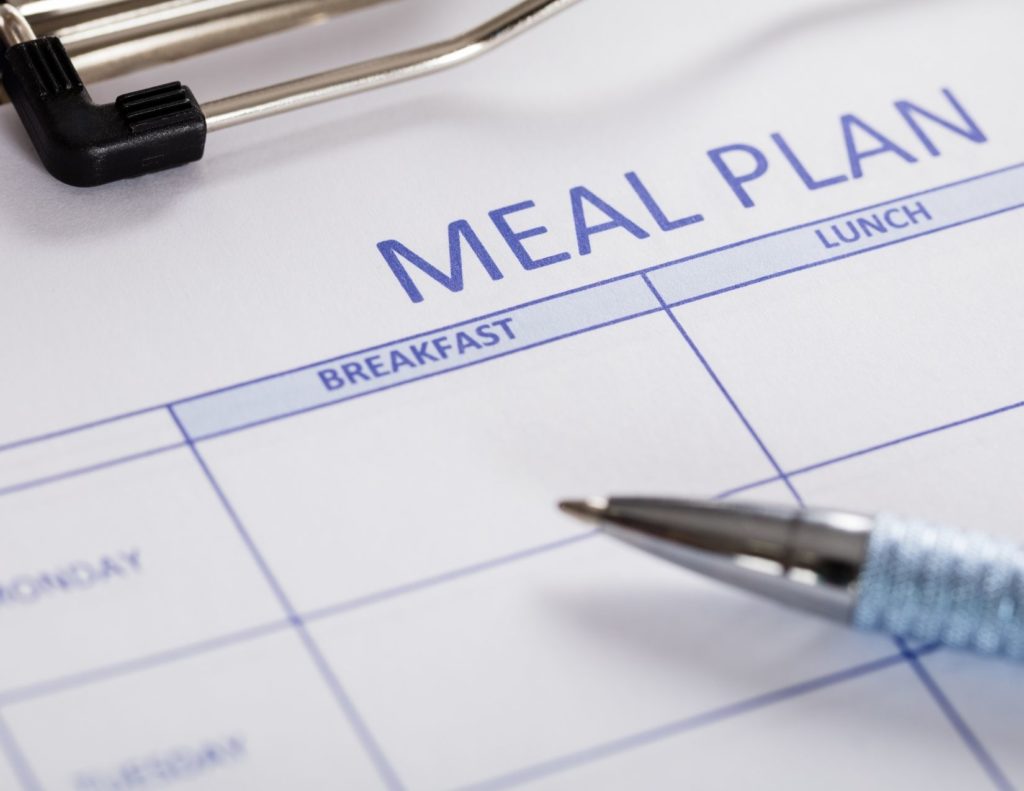
Meal planning is so vitally important to reducing food waste. Picture this with me if you will… You head to the grocery store without a meal plan or a list. You proceed to buy a bunch of foods that you THINK your family will eat, including a tub of spinach. The week moves along and you never get around to using the spinach (or only use half of it). You then watch as the $5 spinach begins to rot and decompose in the tub. Gross.
Alternatively, picture this with me … You head to the grocery store with a list of foods you need to make the meals you’ve scheduled. You grab a tub of spinach because you’re making a soup with spinach in it and you plan to use the rest for Monster Spinach Muffins.
I’ll admit that meal planning can be a drag and hard to get into a good sustainable routine and rhythm! If you need help with that, check out our Ultimate Meal Planning and School Lunch Guide to get you started!
#5 Stick to a grocery/food budget
It is easier to only buy what you need and not buy food in excess (especially perishable food) when you have a weekly or monthly food/grocery budget. There are so many different apps and tools out there that can help you create a budget and track it too.
One of the advantages to online grocery shopping is that you can see your total accumulate as you add food to your “cart”. This definitely helps to minimize impulse purchases that may simply end up in the compost or trash.
#6 Re-imagine leftovers
It’s hard to plan meals that have no leftovers. Leftovers are part of cooking and to be honest, they’re a welcome addition (planned addition) in my home. Purposefully cooking more than we will eat at dinner is commonplace so that we can enjoy leftovers for lunch or to store away in the freezer.
We try our hardest to eat up leftovers but sometimes they get pushed to the back of the fridge and are only identified weeks later in an inedible form. If you’re looking to minimize waste from leftovers, here are a few fresh ideas for you:
- To reduce leftover waste, avoid meal planning every day of the week. Allow for one or two nights that you don’t make a new dish. We call these ‘scrounge nights’ in our home and we all eat up the various leftovers that are available.
- Try freezing leftovers in individual portion sizes so that you can pull them out for a quick lunch someday.
- Get creative with reusing leftovers in a new dish the next day! This amazing guide by the University of Guelph Family Health Study called Rock What You’ve Got: Recipes for Preventing Food Waste does just that! If you haven’t already grabbed your free copy, don’t wait!
#7 Don’t let “best-before” dates fool you.

You can eat foods after the best-before date has passed. “Best-before” simply tells you the anticipated amount of time that an unopened food product will retain its freshness, taste, nutritional value and any other qualities claimed by the manufacturer. To help products keep well, store your food properly, at the right temperature, and throw away anything that appears, smells or tastes “off”.
For the record, best-before dates are very different from expiration dates. Expiration dates are required on only a small selection of foods including but not limited to meal replacements, nutrition supplements and infant formula. It is recommended to discard and NOT eat food after the expiration date. For more information, be sure to check out the Government of Canada website on this topic!
There are so many ways that we can reduce household food waste. As you make changes in your home, don’t forget to involve your children. Teaching kids about reducing food waste is an important lesson to learn and one that they will take with them as they venture out on their own some day.
